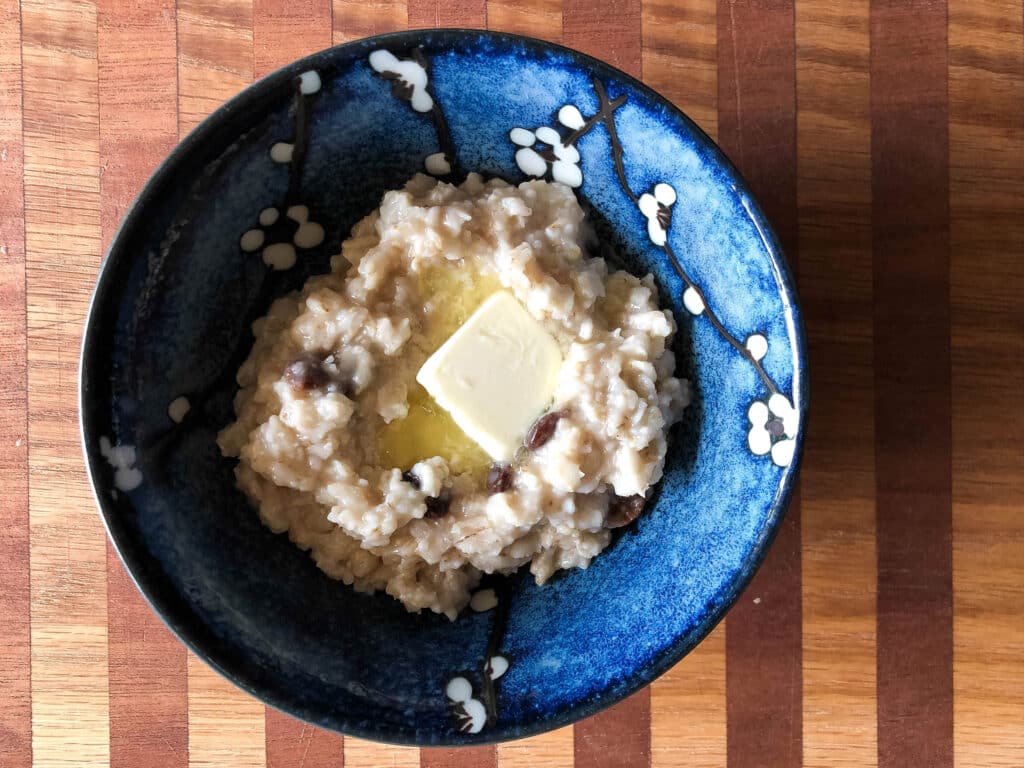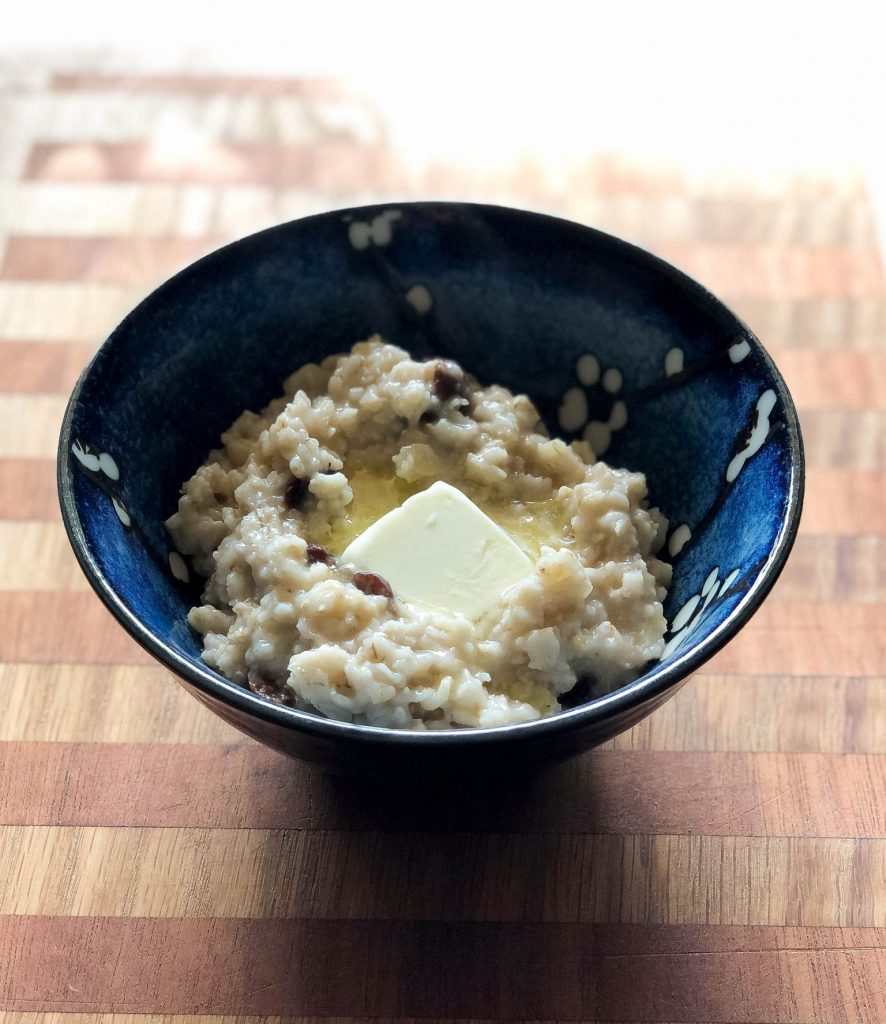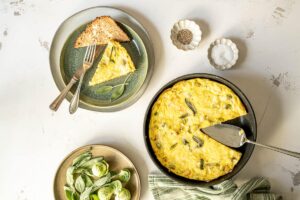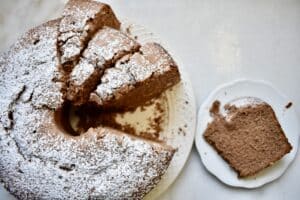It’s Autumn! Porridge to the Rescue!
Welcome to autumn! We can keep ourselves in balance through this and every season by eating certain foods, beverages, herbs, and spices to help balance our bodies and our minds. Some of this comes naturally to us—when it is hot outside, we want to eat and drink cooler, lighter foods. When it is cold outside, we want warmth—in both temperature and spice. We drink more hot tea, we eat more hot soup, we want a hot breakfast.
It is with all of this in mind that I offer this article to you. Today, we will rediscover oatmeal—a traditional, hot breakfast cereal or porridge that can be very nourishing and easy to digest when made with traditional cooking techniques. Homemade oatmeal can balance your blood sugar when you eat it, keeping you satiated for hours, and can even stabilize your blood sugar over time, and reduce insulin resistance. (Believe it or not, oatmeal has been used in diabetes therapy since 1903 by German diabetologist Carl von Noorden, and there are several recent studies (see articles: 1, 2, and 3) on such.)
First, let me clearly state that oats do not contain gluten. Oats are naturally gluten-free. If you have a gluten allergy (celiac) then it would be best to purchase oats that have not been contaminated by grains that contain gluten during processing. This will be noted on the label, as “Gluten-Free Oats”. (If you are “gluten sensitive”, then it would be even better for you to do the GAPS-Gut and Psychology Syndrome™ Diet- to heal and seal your gut. More on that here. )
Bonus! As always, the traditional technique that I share here for oats will also apply to other grains that are similar—other grains that can be made into porridge on a cool autumn or cold winter’s day.
“What is porridge?” you say. I call it a nourishing, hot breakfast cereal, served with lots of grass-fed butter and raw cream (or coconut cream if you prefer). Wikipedia says, porridge: “(historically also spelled porage, porrige, or parritch) is a food commonly eaten as a breakfast cereal dish, made by boiling ground, crushed or chopped starchy plants—typically grain—in water or milk. … Gruel is a thinner version of porridge.” Don’t worry, we won’t be making gruel!
Which grains can we use to make porridge? Oats—rolled, steel cut, cracked, or whole oat groats, kamut, spelt, teff, rye, amaranth, or corn grits (grits require limewater to release the B3 bound up in the corn).
“Porridge” is made by soaking the grains in acidulated water overnight at a minimum (longer is always better), and then cooking the grains and their soaking water in more boiling water for a short period of time—five minutes or a bit more, depending upon the amount you are making. A large batch will take longer to cook.

Let’s unpack all of that! First, “Why Soak?”
Soaking is a “pre-digestion” process. Pre-digestion processes help you to utilize the food you eat more efficiently. They take the strain off your digestive system and make the nutrients in the food more “bio-available”, which means that your body can more easily access and use the nutrients. Doesn’t that sound great?! All grains (and beans and nuts and seeds) contain phytic acid and enzyme inhibitors which are called “anti-nutrients”. (“Anti” = “not” nutrients!) Phytic acid can combine with the important minerals calcium, magnesium, copper, iron, and zinc in your intestinal tract and block their absorption. (I think we need our minerals, don’t you?!) Enzyme inhibitors do just that-they prevent enzymes from working optimally, which can lead to upset stomach and indigestion. Enzyme inhibitors are not easy to break down; cooking grains without having done a pre-digestion process first will not break them down.
So, what happens if we DON’T soak our grains (or do some other pre-digestion process like sprout or ferment them) prior to cooking them? A diet that is rich in whole grains that are not predigested can mean vitamin and nutrient deficiencies (think osteoporosis, etc.). Over time, allergies, chronic indigestion, leaky gut, IBS, candida overgrowth, pre-diabetes and even autoimmune disorders can develop. I’d say it’s worth soaking!
Second, “What is Acidulated Water”?
Acidulated water is water to which you have added some acidic food. Use pure, filtered water or spring water. (NEVER use alkalized water, for soaking grains, or any other reason. Your digestive system is acid, and meant to be that way, or you will never digest your food.) In the case of grains, the acid that you can use can be whey (dripped from organic, whole milk, plain yogurt), yogurt, milk kefir, cultured buttermilk, apple cider vinegar, or lemon juice. When you soak grains in acidulated water, it will break down the phytic acid and enzyme inhibitors for you.
Third, “Why Overnight or Longer”?
Simply put, it takes time for the acidulated water to do its work. The longer you soak, the more anti-nutrients are “neutralized”, or taken out of the picture. Although some books will say that “overnight is enough”, and it may be for some grains, oats are particularly high in phytic acid, so a longer soak is best. I suggest that you soak a minimum of 24 hours. Soaking 36-48 hours is even better! AND, I have found that the longer you soak, the shorter you cook. So, soak long!
Fourth, “Why Cook in Half the Water?”
The rule of thumb for all grains (porridge or not) is two cups of water for every cup of grain. When you make porridge (oatmeal, in this case), you soak the grain-oats-in half the water and then cook them the next day in the other half of the water. Why split the water? Because if you were to soak in all the water, the acid would be diluted and not do its job as well, or in as short a time (which at this point is pretty long at least overnight to 24-36 hours or more). Also, by boiling the second half of the water, and tossing the soaked grains and their soaking water into the boiling water, the grain will cook through faster and more evenly. It works!
Let’s get to the recipe!
For the best oatmeal, you would purchase organic oat groats, (aka whole oats), toast them lightly in the oven, and then chop them in a food processor or home grain grinder. Why? Because the moment one “opens the oat”, (or any other grain) i.e., by rolling or steel cutting it, etc., the grain is exposed to air and light and heat…the conditions responsible for rancidity. What to do? No one wants to eat or serve rancid oatmeal! If you are not going to purchase whole oats, or oat groats, and grind them yourself just prior to preparing them, it is best to purchase rolled or steel cut oats (according to your preference), in small quantities, preferably in brown paper or other packages that keep out the light. (For the reasons just explained, oats from bulk bins are not so good, unless you get to the oats when the bin has just been filled.)

Autumn (or anytime!) Oat Porridge, aka Oatmeal
Serves 4
Ingredients
1 cup organic oats, rolled or steel cut, or whole and lightly toasted and ground
1 cup warm, pure water
2 tablespoons dripped whey (see recipe below), yogurt, milk kefir, cultured buttermilk, lemon juice or raw apple cider vinegar
Sea salt
1 cup pure water
½ teaspoon cinnamon (or more to taste)
½ teaspoon ground ginger (or more to taste)
1/8 teaspoon ground white pepper (more or less to taste)
Instructions
In a medium bowl, mix the oats in the warm water with your preferred acid (whey, yogurt, etc.). Cover the mixture with a plate or dish towel. Leave overnight, or up to 48 hours at room temperature.
When you are ready to cook the oats, bring the second cup of water to a boil in a medium saucepan. Pour the oat mixture into the boiling water and add sea salt and spices. Stir well and bring down the heat. Continue stirring so the oats do not burn.
ALWAYS serve oatmeal (or any other porridge or grain) with plenty of healthy fats! Butter from pastured cows, raw cream, coconut cream, ghee, coconut oil, or a combination of them! Healthy fat will not only help to satiate you, it will also prevent a blood sugar spike that can happen when you eat grains (read “carbohydrates”).
If you would like sweetener, you may wish to add a bit of raw honey to your bowl or raisins to the oatmeal while it is cooking. I usually start with a handful.
What makes this “oatmeal for autumn”? It is a hot breakfast cereal, and the addition of the warming spices of cinnamon, ginger, and white pepper do much to ward off the morning chill. Enjoy!
If you would like more information about working with nuts, seeds, beans and grains, see my chapter on Seeds in The Complete Cooking Techniques for the GAPS™ Diet.
If you would like to learn more about how to soak other whole grains and beans, you may wish to check out my chart, Preparing Whole Grains and Legumes for Ease of Digestion and Nutrient Availability!
Autumn (or anytime!) Oat Porridge, aka Oatmeal
Source: Monica Corrado
Course: Breakfast
Serves:
Ingredients
- 1 cup organic oats rolled or steel cut, or whole and lightly toasted and ground
- 1 cup warm, pure water
- 2 tablespoons dripped whey (see recipe below) yogurt, milk kefir, cultured buttermilk, lemon juice or raw apple cider vinegar
- Sea salt
- 1 cup pure water
- 1⁄2 teaspoon cinnamon (or more to taste)
- 1⁄2 teaspoon ground ginger (or more to taste)
- 1⁄8 teaspoon ground white pepper (more or less to taste)
Directions
- In a medium bowl, mix the oats in the warm water with your preferred acid (whey, yogurt, etc.). Cover the mixture with a plate or dish towel. Leave overnight, or up to 48 hours at room temperature.
- When you are ready to cook the oats, bring the second cup of water to a boil in a medium saucepan. Pour the oat mixture into the boiling water and add sea salt and spices. Stir well and bring down the heat. Continue stirring so the oats do not burn.
- ALWAYS serve oatmeal (or any other porridge or grain) with plenty of healthy fats! Butter from pastured cows, raw cream, coconut cream, ghee, coconut oil, or a combination of them! Healthy fat will not only help to satiate you, it will also prevent a blood sugar spike that can happen when you eat grains (read “carbohydrates”).
- If you would like sweetener, you may wish to add a bit of raw honey to your bowl or raisins to the oatmeal while it is cooking. I usually start with a handful.
- What makes this “oatmeal for autumn”? It is a hot breakfast cereal, and the addition of the warming spices of cinnamon, ginger, and white pepper do much to ward off the morning chill. Enjoy!







